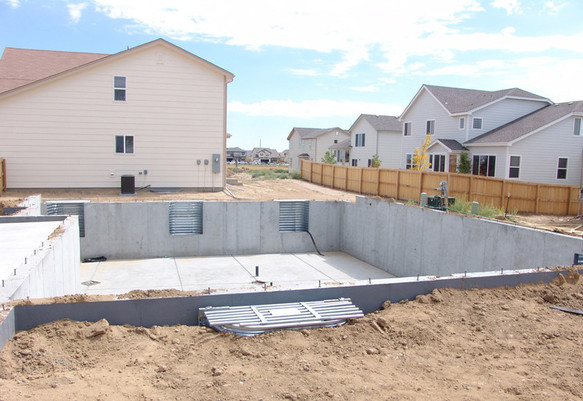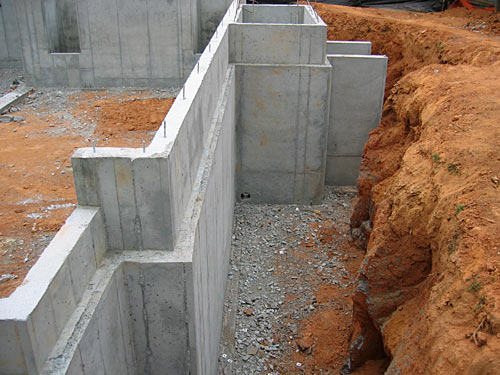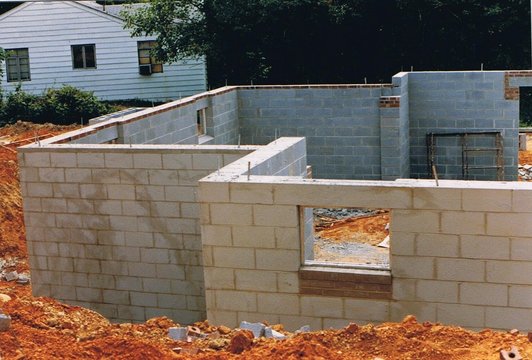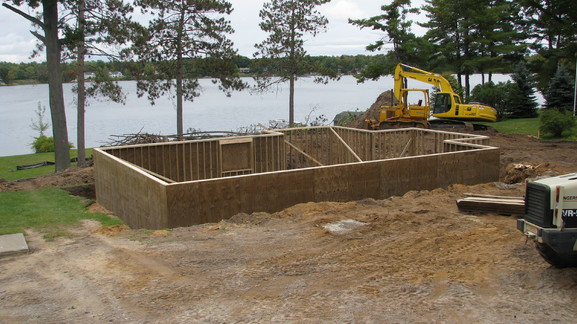Concrete Vs. Wood Foundations
Apr. 22, 2017
Whether you're buying or building a house, the foundation will always be a major point of interest - after all, it supports the entire structure. Home Inspection clients often ask what material is most beneficial, or express concerns about an existing foundation made of wood, so let's break down the pros and cons of these materials.
Regardless of whether a foundation is wood or concrete, it is extremely important that surface drainage is arranged to discharge away from the house. This means rearranging downspouts from roof gutters to discharge at least 6 feet away from the foundation wall, and arranging the ground around the home to slope down at least 1 inch per foot for 6 feet in distance (if this is not possible, a qualified contractor can recommend other options). This prevents excessive hydrostatic pressure exerted on the wall from heavy soils saturated with water, and frost pressure (which is far more powerful) when that saturated soil freezes.
POURED CONCRETE

Poured concrete is a solid concrete wall. Around two-thirds of all foundations are poured concrete - it is by far the most popular choice due to durability for use below ground, and the fact that concrete is readily available, which makes it affordable. In new construction it is common to reinforce poured concrete with steel rods for added density and strength, which increases the cost.
These walls are mostly prone to cracking, but are generally quite effective in resisting water intrusion, especially when a water-proofing membrane is applied during construction. Larger chunks of gravel are used in poured concrete compared to concrete block, so the most common installation error is inadequate "tamping". Tamping is the use of vibration to prevent gravel from clumping together inside the concrete mix, which would create weak areas in the wall.
CONCRETE BLOCK

Concrete block walls are more labor intensive, requiring mortar at all joints connecting the blocks. These blocks create a hollow core inside the wall that is normally filled with concrete and reinforced with steel rods. Concrete block walls are more susceptible to water intrusion than solid concrete, due to having many joints. Block wall foundations are common in houses built prior to 1965 and were sometimes arranged without mortar and/or without filling the hollow core with concrete. Poor installations such as these tend to be very susceptible to structural movement and water intrusion.
WOOD FOUNDATION

Wood foundations are built with wood that has been treated to resist rot. These foundations may create a warmer basement in cold weather and may be more cost effective for isolated building sites where concrete is unavailable or would be expensive to transport. However, wood in contact with soil in never a great idea. When poor surface drainage causes damage to a concrete foundation, it might result in cracking - cracks can usually be patched. Moisture damage to a wood foundation means rot damage, and once there is rot present, it tends to spread to adjacent areas (rot is actually a fungus, like mold). If you plan to build a house with a wood foundation, it is extremely important to control surface drainage so that water is not discharging anywhere near the foundation wall. If you are buying a house with a wood foundation, you should have it analyzed by a structural engineer to determine an estimated remaining service life, and be sure to correct all surface drainage issues immediately.
Written by:
DONOVAN ILLIG
Home Inspector & Residential Environmentalist
Premium Home Inspections Ltd.
250-617-3378 | donovan@premiumhi.net
CPBC License #71217



